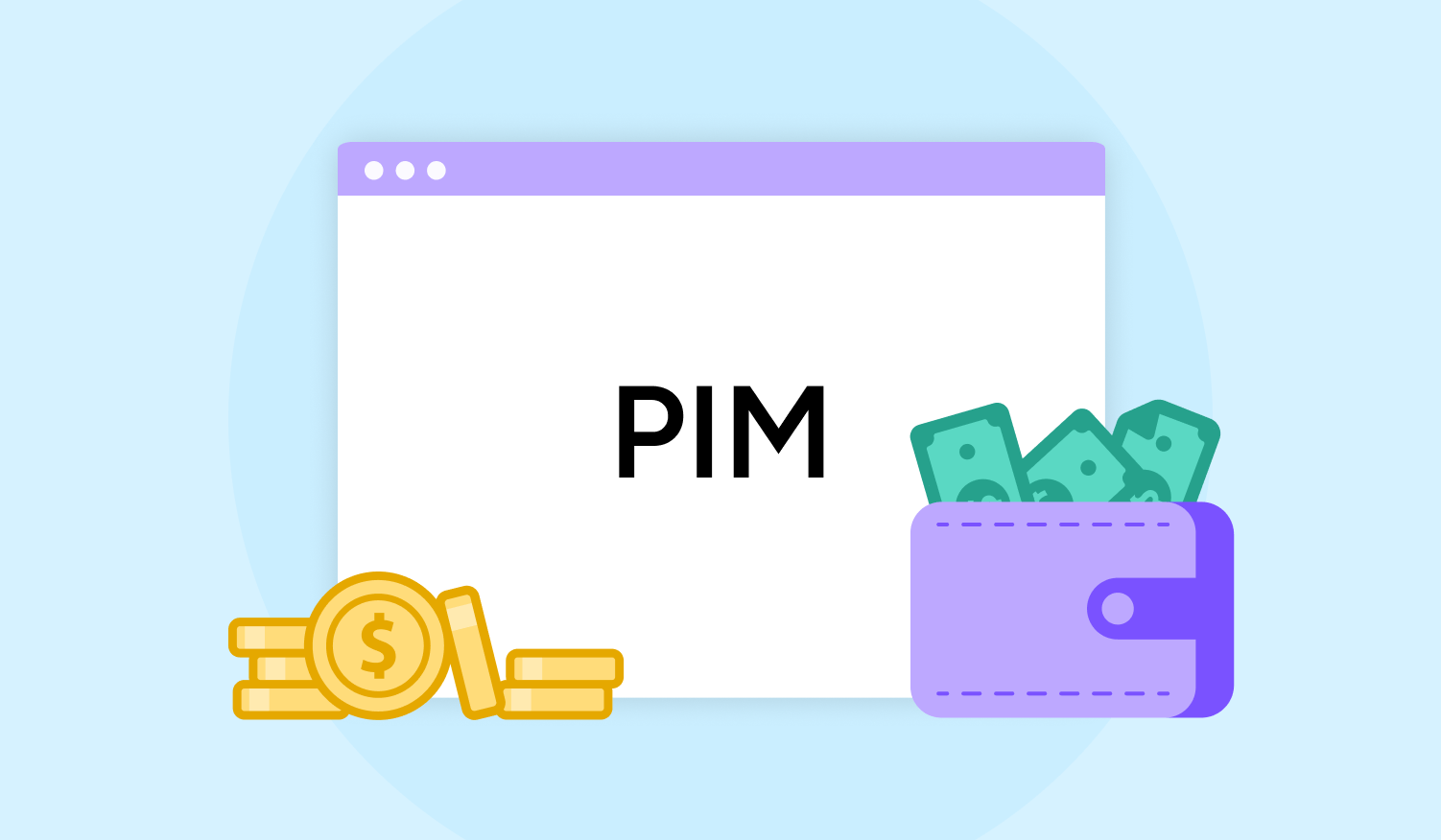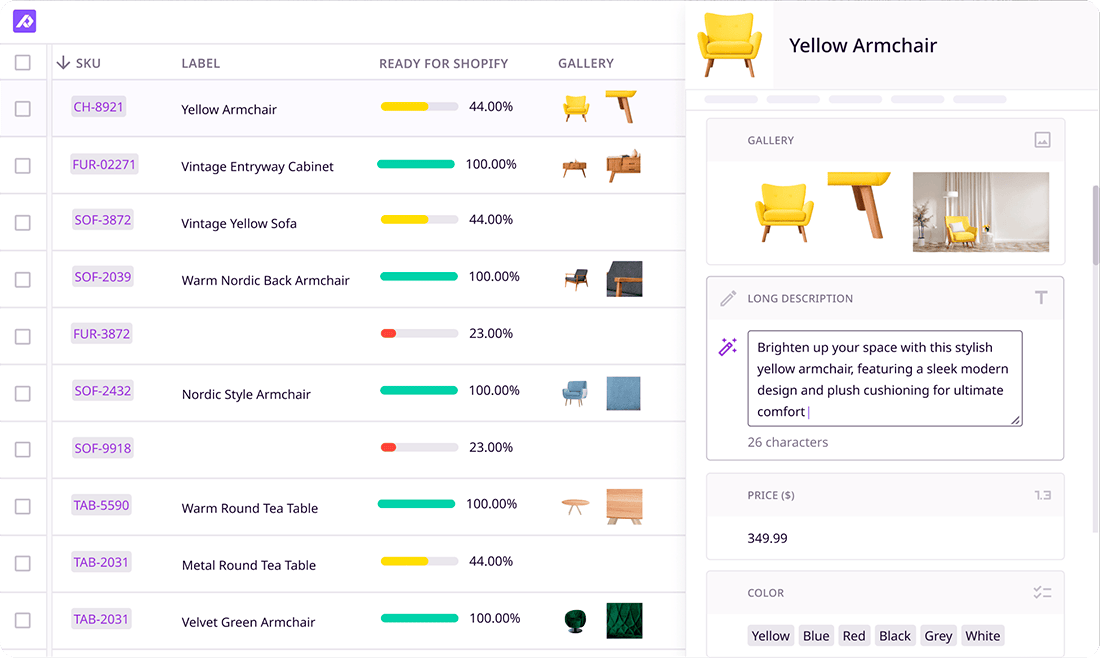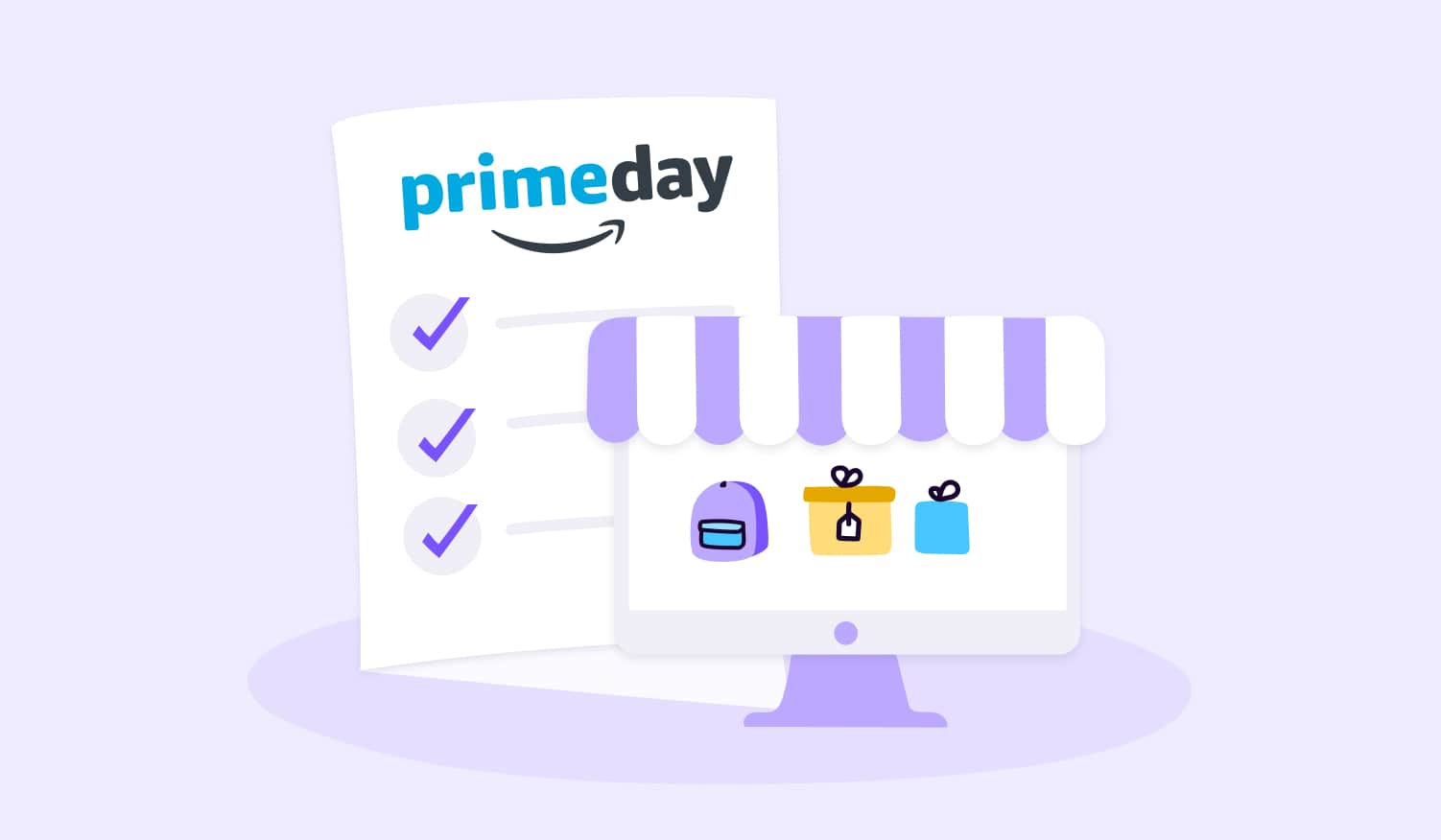How Much Does a PIM Cost (And What Are You Really Paying For)?

Keep the good stuff coming
Subscribe to our blog newsletter and get monthly content that helps you manage product data smarter.
No spam. Just real value.
How much does a PIM cost? Well… how long is a piece of string? There’s no simple answer (though most Product Information Management (PIM) software pricing tends to fall somewhere between $0 and $50,000 per year).
That’s because not all PIMs are built the same. Some are cloud-based, some are on-premise. Some charge a low monthly fee but hit you with a big implementation bill. Others skip the setup cost but come with a higher subscription.
And honestly, the real question isn’t what a PIM costs, it’s what you’re getting for your money. A cheap PIM that doesn’t help you sell more is not a bargain. But a PIM that earns its keep is worth shelling out for: you’ll see the returns in the increased sales and reduced product returns.
Despite its benefits, PIM has a reputation for being expensive and, well, not essential. That’s because back in the early 2000s, PIM software was only used by huge, multinational retailers. It was pricey, complex, and used purely as an internal tool.
Fast forward to the 2010s, and ecommerce blew up. Suddenly, even small brands were selling across multiple marketplaces, and spreadsheets just weren’t cutting it. PIM evolved to keep up: it became a distribution center for all product data. These days, there are PIMs purpose-built for SMBs—affordable, easy to implement, and designed to help you grow.
So, back to the question at hand: when we say affordable, just how much money are we actually talking about? Let's dive in.
Psst: Are you only interested in how much Plytix PIM costs? No need to hang around here; our pricing is fully transparent.
Types of PIMs (and how they charge)
First up, to understand how PIMs are priced, you’re going to need to know a bit more about how they work. Where the PIM is hosted, and whether or not you need to pay a license fee to use the software will both impact the price (and whether you pay one lump sum, monthly fees, or a mixture of both). Let’s break down the two most common types of PIM and how they charge:
The SaaS (Software as a Service) PIM
This is the most common type of PIM solution today, especially for small and mid-sized businesses. You pay a monthly or annual subscription fee to access the software via the cloud. It’s easy to get started, and plans are usually tiered based on usage.
How do you license the PIM software? Pay a subscription fee
Where is the software hosted? In the cloud
Typical pricing models:
-
Free: A very small number of PIMs (including Plytix) offer basic features or a reduced version of their platform for free. Because we believe you should only have to pay for what you need, you can try out Plytix PIM for free with 500 SKUs, no strings attached.
-
Tiered subscriptions: You pay monthly or annual fees. There are cheaper “tiers” that give you access to fewer features, allow fewer users, or manage a limited number of SKUs. This is great for smaller businesses (you only pay for what you need, and you can just move up to the next tier as your needs grow).
-
Usage-based: Instead of set tiers, how much you pay depends on usage metrics like product data volume, number of SKUs, or API calls.
Additional costs:
-
Implementation/onboarding: Some SaaS PIMs charge a one-off setup fee that includes account setup and training costs.
-
Add-ons: Extra features like Digital Asset Management (DAM) or analytics might incur extra costs.
The open-source PIM
Open-source PIMs offer software that is free to download and use (though you may need to pay a license fee). That means you can access and modify the source code to meet your specific needs. These heavy-duty PIMs are great if you have exceptionally complex requirements, but you can expect lengthy implementation and ongoing costs for maintenance and development (some will try to lock you into a support contract, too), which might end up costing more.
How do you license the PIM software? It can be free, or you pay a one-off fee.
Where is the software hosted? It can be hosted on-premise, in the cloud, or in your private cloud.
Typical pricing models:
-
Free core software: Downloading the software will cost you nothing.
-
License fees: Whilst not all open-source PIMs ask for this, some do need a license fee in order to use their software, so check carefully.
-
Paid support: Open-source PIMs often charge for professional support, hosting, or enterprise features. These fees are “optional,” but you might find it hard to use the PIM without paying them.
Additional costs:
-
Customization: You’ll need a dev team to set up and tailor the PIM to your needs. That can be yours, the PIMs, or a third party, but either way, it will cost you.
-
Ongoing maintenance: Ongoing updates and security patches will need to be managed internally or via third parties.
-
IT Personnel: You might need additional staff (or to pay an agency) to manage system maintenance and support
-
Infrastructure: If you’re hosting this PIM software, so you’re going to need somewhere to put it. Hardware, storage, and network expenses all need to be factored into the final price.
SaaS vs open-source: What’s included in the price tag
As we’ve seen, both types of PIM come with different associated costs. With a SaaS PIM, most of the technical costs (think license fees, hosting, and maintenance) are covered by your subscription fee, which can make things seem a little simpler.
With an open-source PIM, you might need to think a little harder to estimate the final price, but if you have complex needs or are happy to put in the technical legwork, you’ll reap the benefits.
Here’s a side-by-side comparison of common PIM types and what is (and isn’t) included in their costs:

Not sure whether an open-source or SaaS PIM is the right option for you? Have a look at the pros and cons of open-source PIMs, plus tips on how to choose the right PIM for you.
So… which one’s right for you?
That depends. The best type of PIM software for your business comes down to, well, your business: Whether you have in-house developers. How many products you manage and how fast you plan to grow (you don’t want to invest in a PIM only to outgrow it in a year).
The good news? Once you understand how different PIMs are built—and how that affects their pricing—it becomes a lot easier to compare your options.
Want some extra guidance? Our Ultimate PIM Buyers Guide is just what you’re looking for.
What impacts the cost of a PIM?
We’ve had a look at the types of PIM software out there, how they typically charge, and what's included in that price. But even when you’re comparing similar setups (like SaaS PIMs with monthly fees), prices can still vary significantly.
But pricier doesn’t equal better in the world of PIM. Higher price tags might be driven by customizability options or extra features that you just don’t need. And if you’re not using them, you definitely don’t want to pay for them.
Here's what drives up the cost of PIM (or keeps it manageable):
-
Number of users
Many SaaS PIMs charge per user or cap the number on each plan. -
Number of SKUs
Whether you manage 500 or 500,000 products, most PIMs scale pricing based on volume (especially those with tiered or usage-based pricing). -
Integrations
Want to connect your PIM to marketplaces, ERPs, or CRMs? That might cost extra. SaaS tools often include some built-in integrations (depending on your tier), while open-source and on-premise systems usually require custom API work. -
Volume of data
Images, PDFs, videos, and localized content all take up storage. Many SaaS plans include limits (and going over them will cost you extra, or require moving up to the next tier). -
Level of customization
Out-of-the-box SaaS tools are great for simplicity, but limited in flexibility. Deep customization (via devs or agencies) is possible with open-source or enterprise tools, but it comes at a premium. -
Features
Advanced features like channel-specific feeds or analytics might cost extra or only be available in higher tiers (and there are a lot of helpful features you might want included in your PIM). -
Support and services
Some PIM providers charge extra support fees for priority support, dedicated account managers, or onboarding services. (At Plytix, we never charge extra for support, nor does our support have an expiration date. We’re always here to help you reach your goals.)
PIM pricing comparison table
We’ve arrived at the moment we’ve all been waiting for! Now we know a bit more about what’s included in PIM pricing and how to tell which ones will work for your business, let’s have a look at how much the big names in PIM actually cost.

Disclaimer: At Plytix, our pricing is fully transparent, but other PIMs prefer speaking with potential clients before providing a quote. This table offers an overview of typical pricing, but we recommend reaching out directly to the PIM for the most accurate and up-to-date pricing.
How to choose the right PIM
Now you’re armed with an idea of what the big names in PIM actually cost, and what you get for that price tag, it’s time to have a look at your own business. Choosing the right PIM isn’t just a matter of choosing one at the right price point. It’s about choosing one that’s right for you. To do that, it helps to identify your “must-haves” and your “nice-to-haves.” This makes it easier to separate what’s worth paying for from features that’ll only drive up your cost without adding real value.
Ask yourself:
-
How complex is your product data?
More SKUs and variations mean more complexity (and likely a higher price tier). Know your numbers to get accurate quotes. -
Who will use the PIM, and how tech-savvy are they?
If your team isn’t super technical, prioritize ease of use over deep customization. And since most PIMs charge per user, think about who actually needs access. -
Can you manage it in-house, or will you need help?
Some PIMs are plug-and-play. Others? Not so much. Be honest about the time and skills your team has (and check user reviews on sites like G2 or Capterra to see if a tool is really as intuitive as it claims). -
How much customization do you really need?
SaaS tools are faster to set up and easy to scale. Open-source or on-premise options offer more control, but also demand more time, money, and tech resources.
Figuring this out early makes comparing PIM pricing much easier. It allows you to pinpoint which features and pricing tiers matter most so you can make a smarter, more informed decision that balances cost with the functionality you actually need.
What about ROI?
We can’t talk about PIM pricing without mentioning Return on Investment (ROI). After all, the price tag is far less important than what you get for it.
A PIM doesn’t just organize your product data—it reduces manual work, prevents costly errors, speeds up time to market, and helps you sell more. The real value of a PIM lies in the money it saves you—and the money it helps you generate.
To estimate ROI, start by comparing:
-
How much time you’ll save on repetitive tasks like spreadsheet cleanup, product updates, and channel formatting.
-
The impact of error reduction as a result of having a single source of truth—think fewer listing rejections, fewer returns.
-
How much revenue can be gained by getting products to market faster, selling across more channels, and improving product content that directly impacts conversions?
Then map that against the pricing model:
-
Will you need extra for features like DAM, channel feeds, or localization to see that return on investment (and if so, will you have to pay extra for them)?
-
Will you need to pay for custom development to see the full return on investment, or is there an out-of-the-box PIM that will get you the same results?
-
How much support and onboarding is included (if you’re spending as much time figuring out how to use the PIM as you were filling in spreadsheets, you’re gaining nothing)?
When you do the math, a “cheaper” tool might end up costing more in time and missed opportunities. Likewise, a higher upfront cost can be worth it—if it unlocks features and efficiency that actually drive growth. Look to the future of your business, don’t just focus on the short term.
Remember: There are a number of ways a PIM might bring a return on investment, including increasing sales and ROI, and increasing productivity. The key is knowing what your business needs to hit its goals—and making sure the price you pay for a PIM reflects the real value your business is getting.
Next steps: How to compare PIM pricing
Now that you have a clearer picture of PIM pricing and what goes into it, it’s time to start comparing PIMs to see which ones are right for you (and your wallet).
Here’s a quick overview to guide your next moves:
- Define your needs: List your must-haves and nice-to-haves so you know what you’re looking for in a PIM.
- Set a budget: Understand how much you're willing to invest (and what you expect in return).
- Book demos: Test-drive a few PIMs to see how user-friendly they are and see their features in action, to see which one fits your needs.
- Get quotes: Ask for a full breakdown of what’s included in the price and what optional add-ons there are, so there are no nasty surprises down the line.
- Check support: Find out if the vendor offers solid ongoing coaching and help.
- Read reviews: See what real users say on platforms like G2 or Capterra.
- Consider growth: Make sure the PIM has all the features you might need as you grow, plus room to add extra users and products.
Wrapping it up
There’s no one-size-fits-all answer to “how much does a PIM cost?” It depends on the pricing model, the type of PIM you choose, and how many features or users your business actually needs. But here’s the thing: the cheapest option isn’t always the most cost-effective. If you end up spending extra time and money to make a cheaper PIM work, it’s not a good deal.
The right PIM should be priced in a way that matches your growth and delivers real value from day one.
We know the PIM world inside out, so if you still have questions about PIM pricing, book a call with our team. We’re happy to talk through your needs, share what we’ve learned, and even point you to another provider if we’re not the right fit. No pressure, just honest advice.
And if you are looking for a PIM that balances price, power, and ease of use? Well… you’re in the right place.

Beth Batley
Beth Batley is a SaaS storyteller with a background in marketing. Now immersed in the software world, she works with B2B and ecommerce companies, writing about (sometimes) complex software in a way that’s straightforward and actually connects.

What if your product data actually worked for you?
We’ll show you how Plytix helps you stop fixing data—and start using it.
Related posts
Keep the good stuff coming
Subscribe to our blog newsletter and get monthly content that helps you manage product data smarter.
No spam. Just real value.



Think others should see this?
Go ahead and share it.